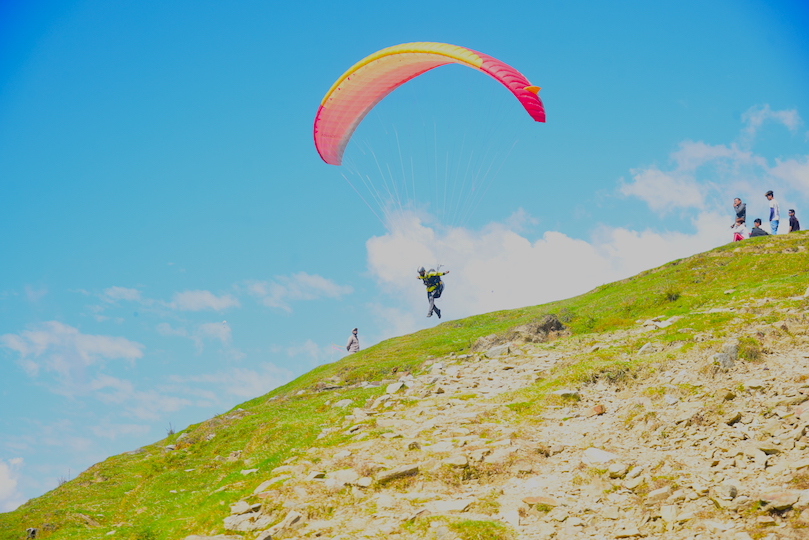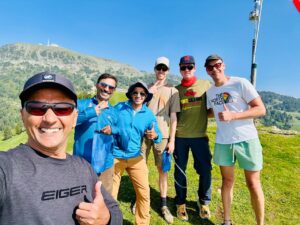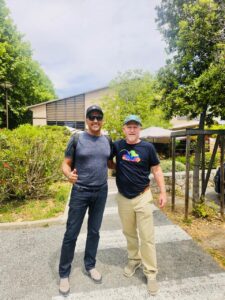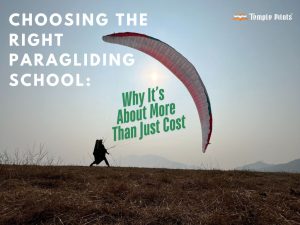Flying a Paraglider on your own.
After completing one year of flying a paraglider with Temple Pilots I (Vrun Singh) would like to share my thoughts and ideas with all of you with an intention to let you know things and ideas that helped me gain a better insight into this sport and thus keep a steady learning curve while enjoying every moment of it!

Starting with the basics:
1) As a beginner keep an empty mind which is more observant and less cluttered with thoughts and fear.
2) Trust your instructors as they are more concerned about your learning and at the same time your safety than you could be.
3) Utilize the idea of visualization as you progress in your training as this is an essential tool to help you bridge the gap between theory and practical skills.
4) This sport requires physical fitness and sound mental awareness. (One should be aware of how the body is behaving in different situations to be able to give correct inputs to a paraglider.)
5) Accept your mistakes and understand that they are natural to happen. It takes a sense of maturity to transform mistakes in to learning and getting the best out of them.

Elements
Then comes the part where you have reached certain level in the sport (CC or APPI3 etc) but are still uncertain about what to do with the skills that you have acquired. What helped me are these four elements:
1) Plan: After you’ve done the initial course plan your furthur training and flying in a way that you are never out of touch of this sport. Understand that currency is one of the most important element to keep your skills fresh and your learning curve steady! In my case I dedicated all my leaves so that I was flying atleast once in two months gap. This is the sequence of courses (after APPI3) that I undertook with Templepilots which helped in keeping the learning curve steady:
a) Basic thermalling course in Panchgani in Jan 2019.
b) Flying and ground handling sessions in Pawna in April
c) Coastal flying in bali and kiting as well in August
d) SIV in Bilaspur in Oct
e) Thermalling course in Bir in Oct.
f) Back to Kamshet for advanced kiting and flying in Nov.
2) Prapare: This sport requires a lot of mental preparation and theoretical knowledge of meteorology, basic aerodynamics, equipment and Techniques. Making notes of what was taught by instructors in the capsules and studying the pilot manual helped me in gaining the required amount of knowledge to be able to understand and appreciate the environment in which I was flying as well as the behaviour of my glider.
3) Practice: To be able to fly well a lot of ground handling is required to sense and feel the glider and give correct inputs. Keep a balance between your flying days and kiting days. Take help of instructors and YouTube videos on the subject to build correct habits.
Perform
4) Perform: The reward of all the hardwork, perseverance and dedication is the finesse and harmony one can gain in flying. Flying a paraglider is no different than meditation. As it brings mind’s attention to the moment and you feel blessed flying like a bird. Completely free and joyful with your mind body and spirit aligned as one.

Finally I would like to sum it up by letting you know that flying a paraglider taught me a lot about myself, to handle my fears and emotions and to understand the fact that all good things require a sense of patience and perseverance and help us in bringing harmony to our thoughts and actions!
Happy flying to all of you and safe take-off’s and landings!
Watch Vrun Singh Fly here
Learn to fly like Vrun in Kamshet with Temple Pilots Paragliding





